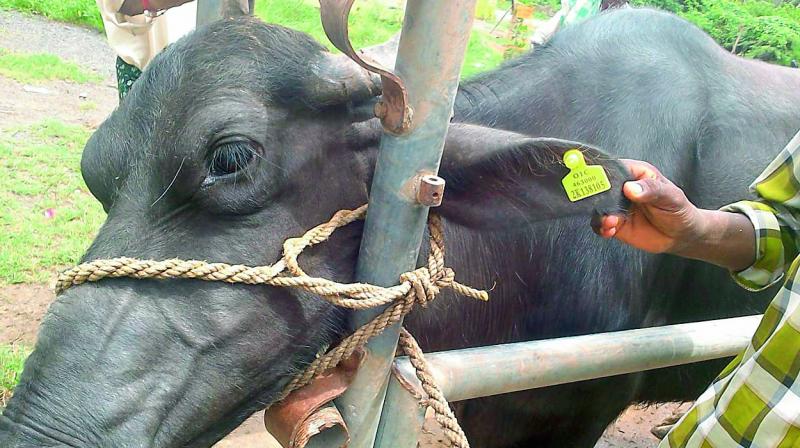Vijayawada: Animal tagging at snail's pace

Vijayawada: The Central government’s ambitious project on animal census and Animal Production and Health tagging is going on at snail’s pace in Krishna district.
The Centre aims to take livestock count and identify the health condition of that livestock and appointed the AP Livestock Development Agency (APLDA) scheme as the implementing agency in the state. The stated aim is to improve productivity of the livestock. The Centre fixed a target of livestock for tagging in the district for the APLADA.
Presently, APLDA staff is identifying the cattle — buffaloes and cows — in the district and tagging them with a Unique Identification Number. Nearly 3,554,800 cattle are to be tagged in the district.
However, APLDA staff has managed to tag only about 12.97 per cent or 46,021 cattle. For tagging the livestock, the APLDA is taking the help of the gopala mitras and the animal husbandry hospitals have allocated 560 personnel.
Armed with the tags, tabs with software preloaded, and individual IDs, the staff have hit the field.
Each tagged animal will be allotted a unique 12 digit identification number issued by National Dairy Development Board.
The field staff will have upload details of the cattle health, its milk yield, reproduction condition, latest treatment given and other details, and also details of the owner on the tabs given. The tag will be fixed to the ear of the animal.
Speaking to this newspaper, state technical officer T. Venkateswara Rao said, “The national animal census has to be completed before February 17. It would only be after that that the INAPH data entry can be speeded up. We are trying to complete the Krishna district INAPH data gathering by March-end.” He added that APLDA chief executive officer P.D. Kondala Rao and deputy director (publicity & ethnicity) P. Sundara Reddy are monitoring the exercise.
Mr Rao said that based on the data collected, treatment will be given for reproduction and milk production of the cattle.

